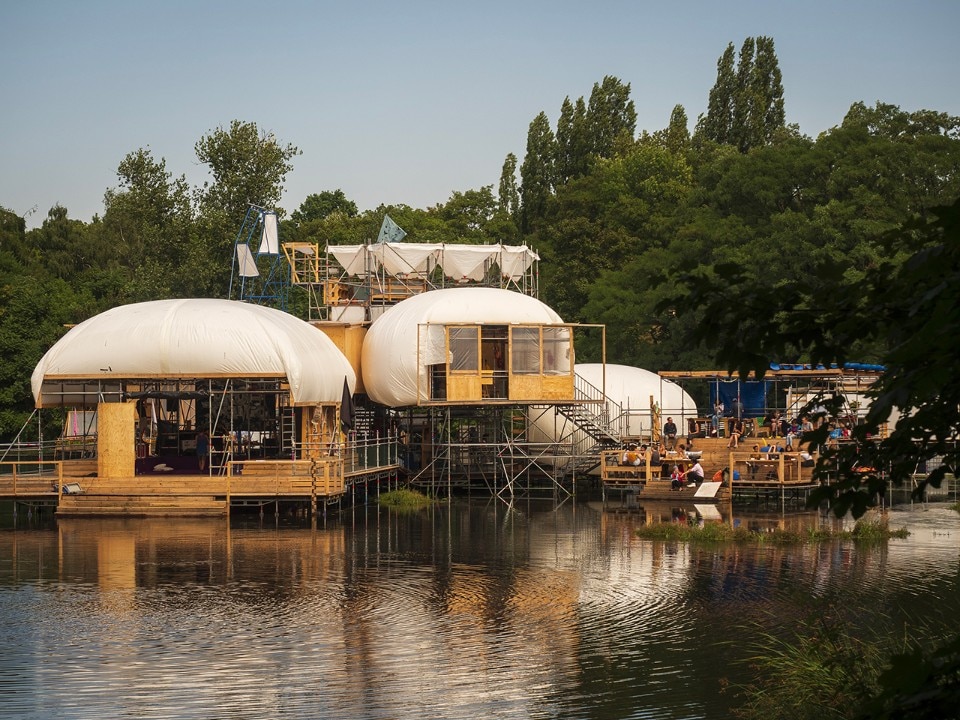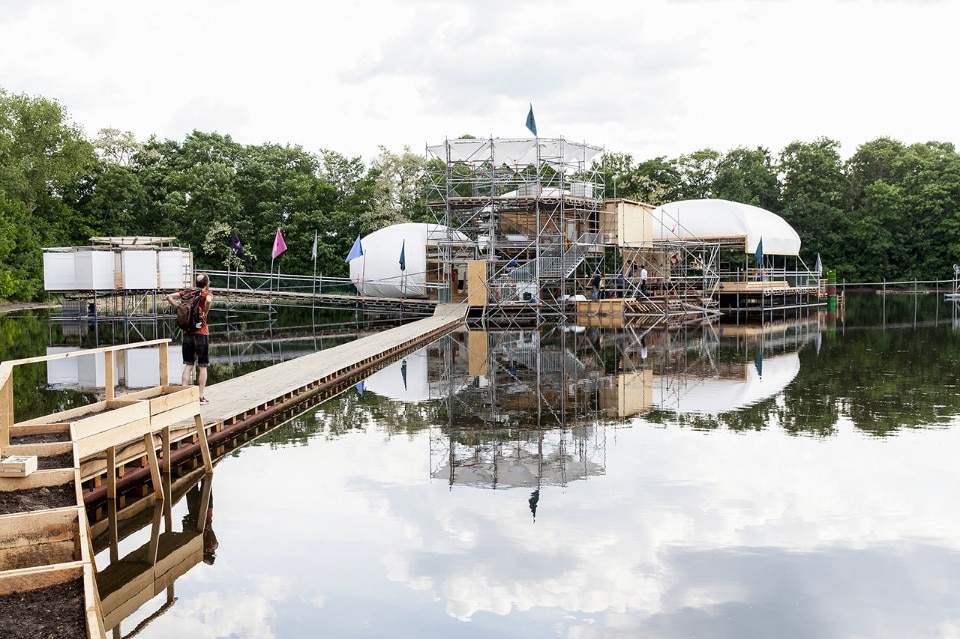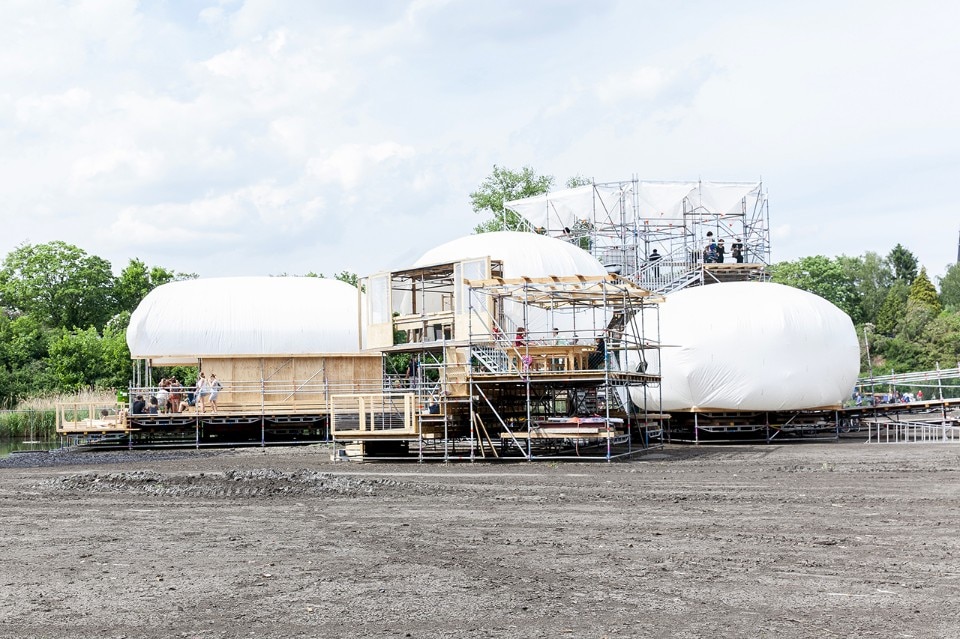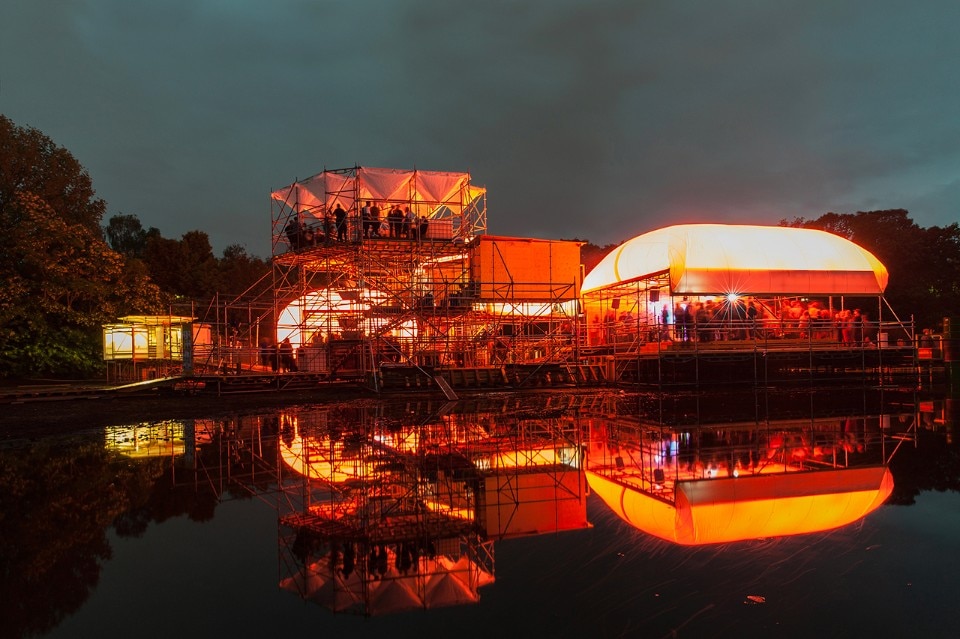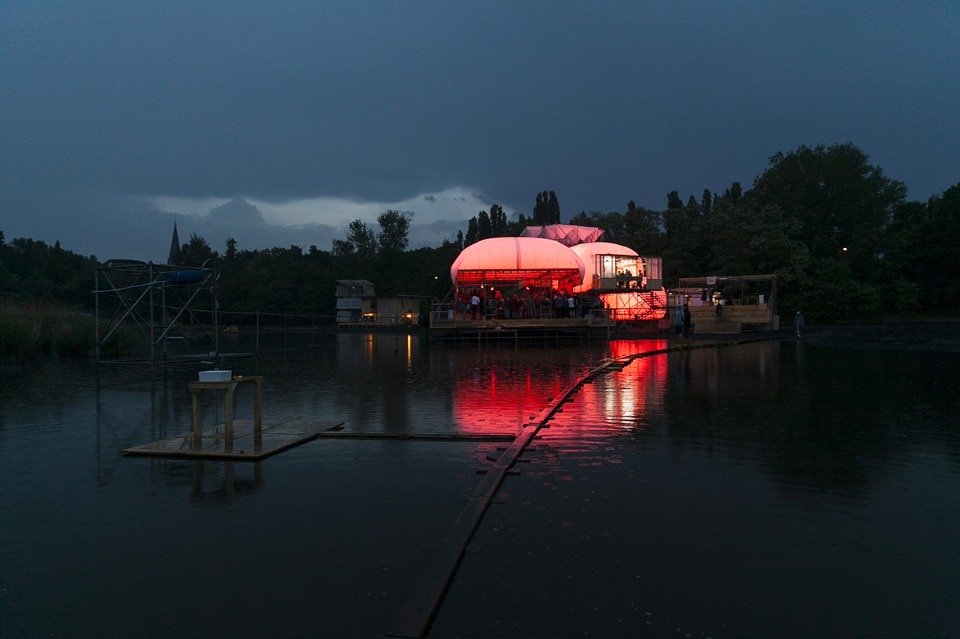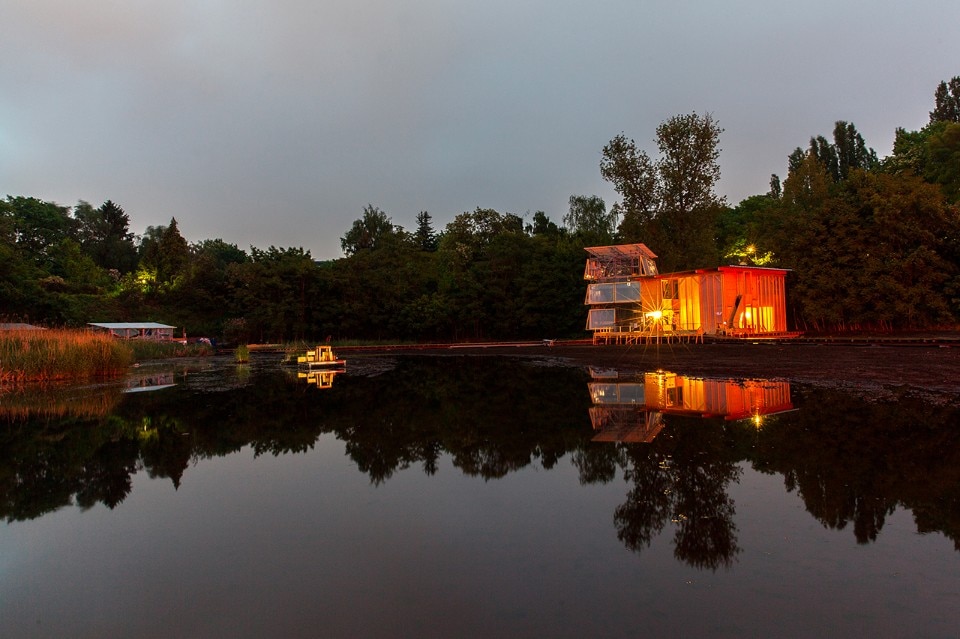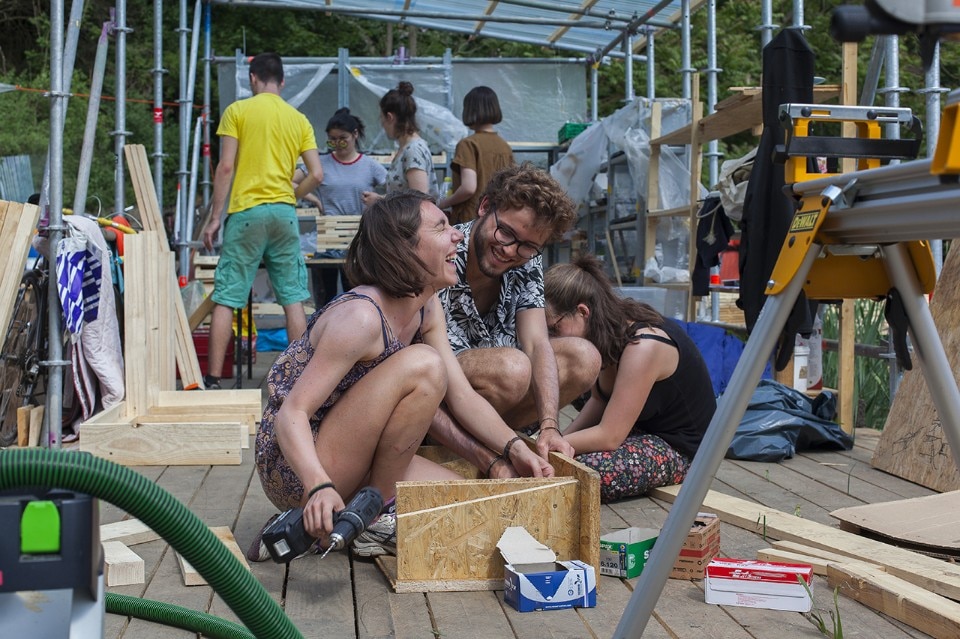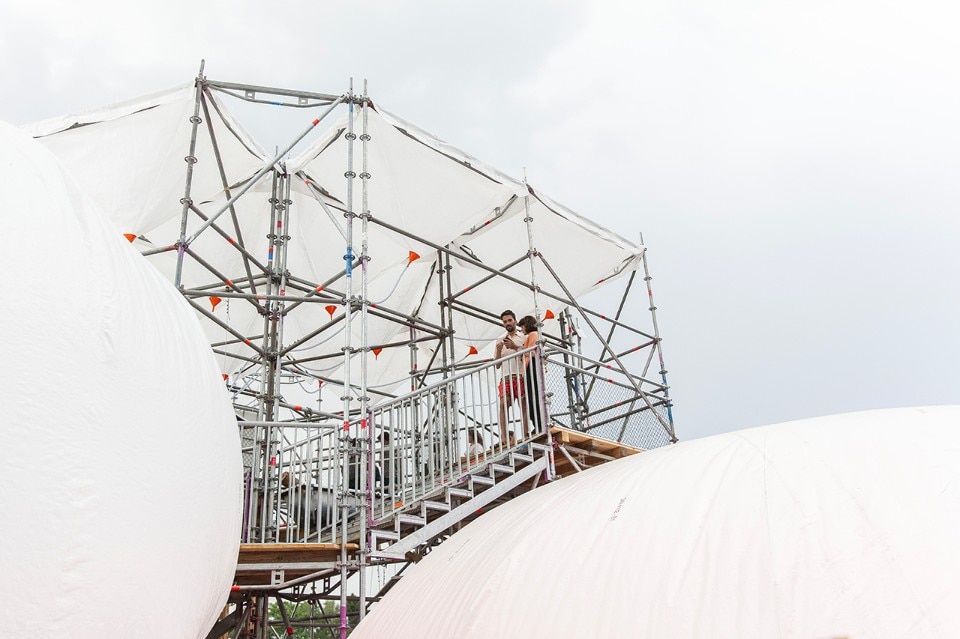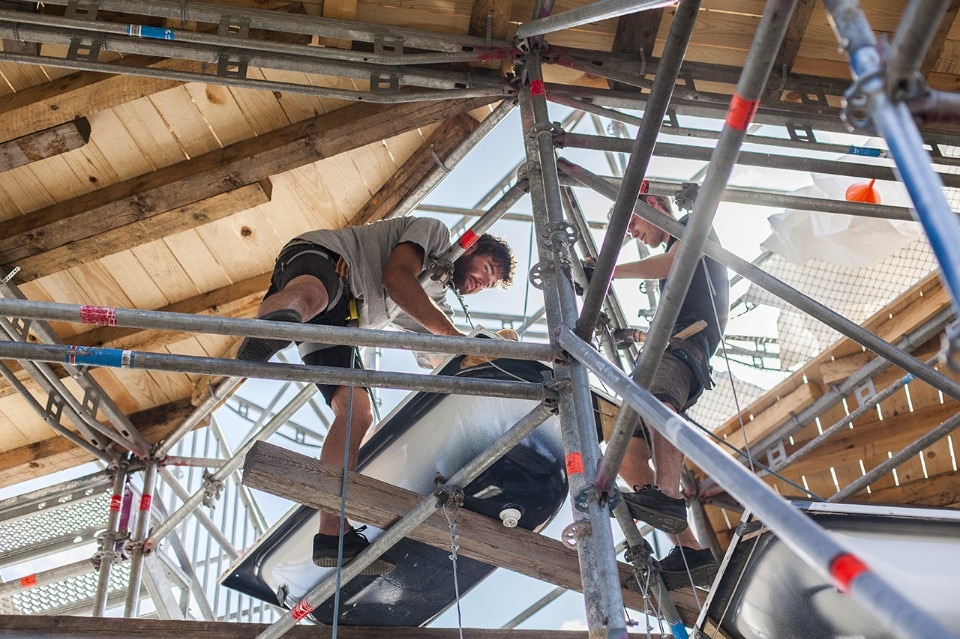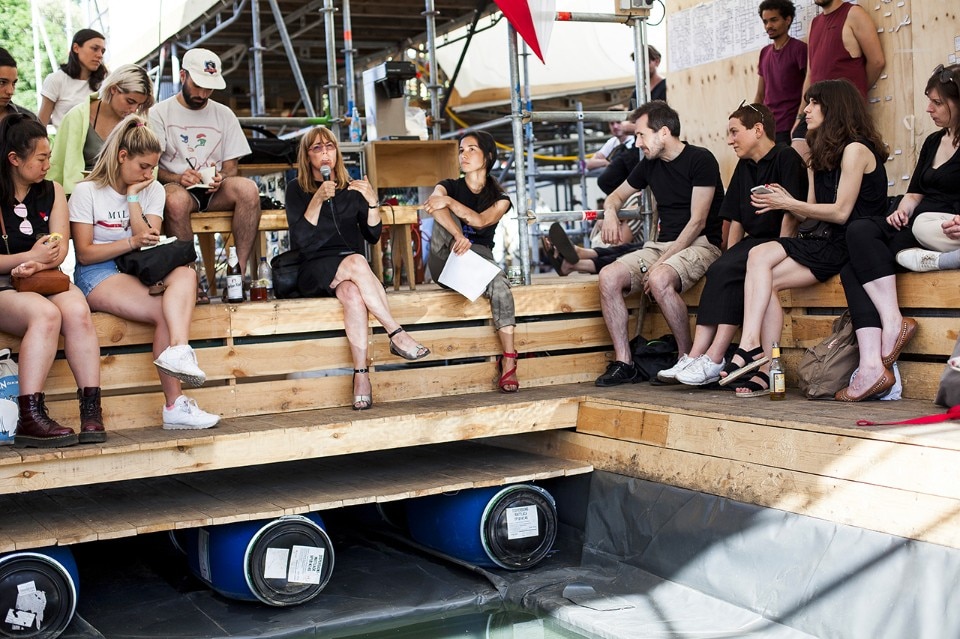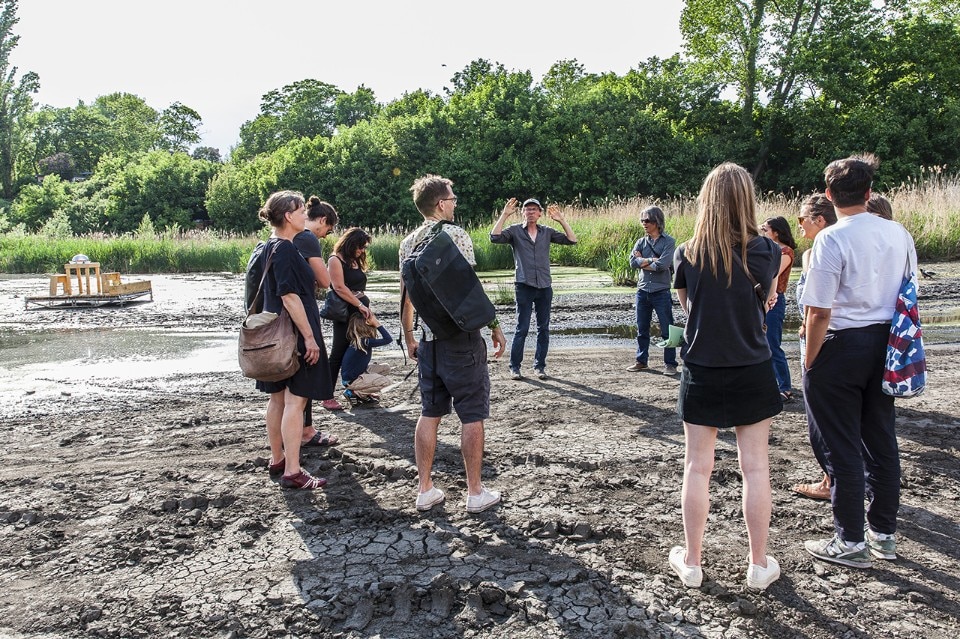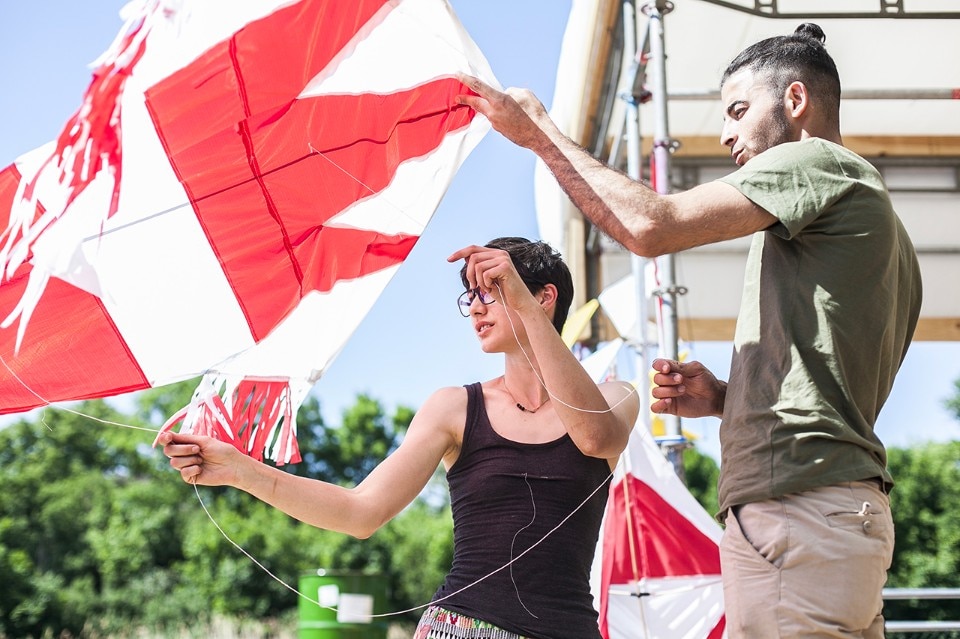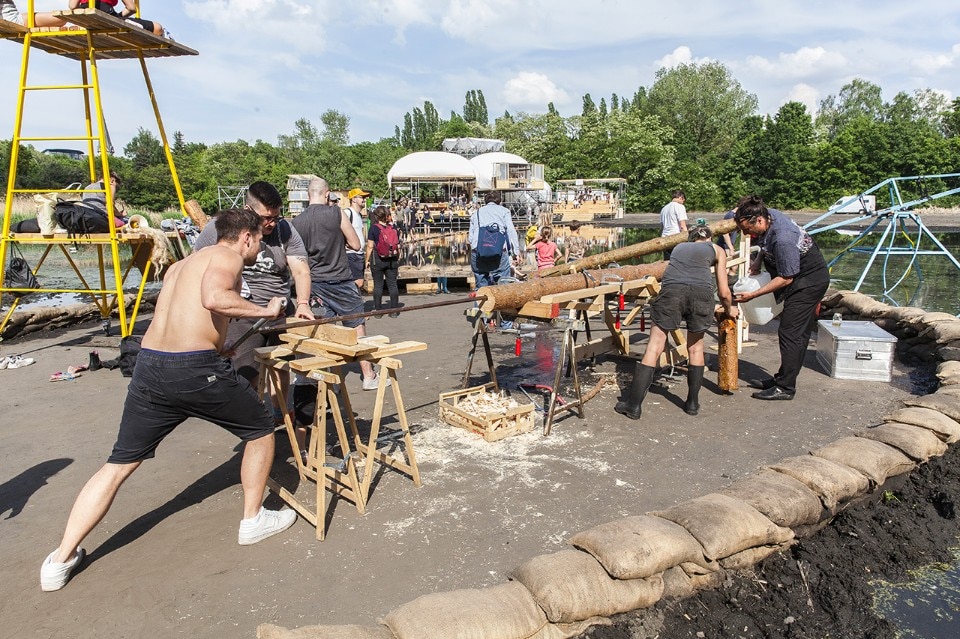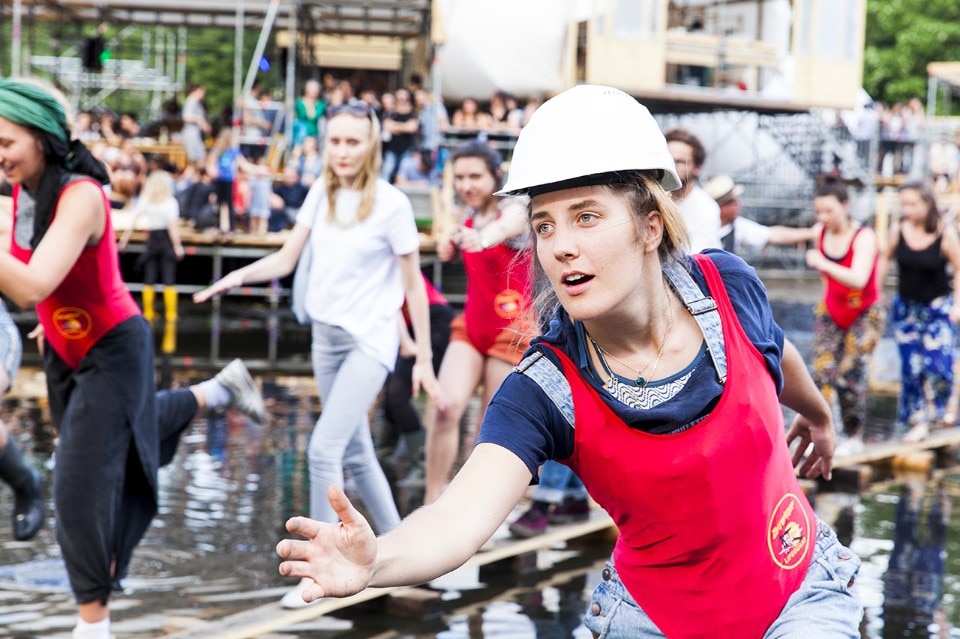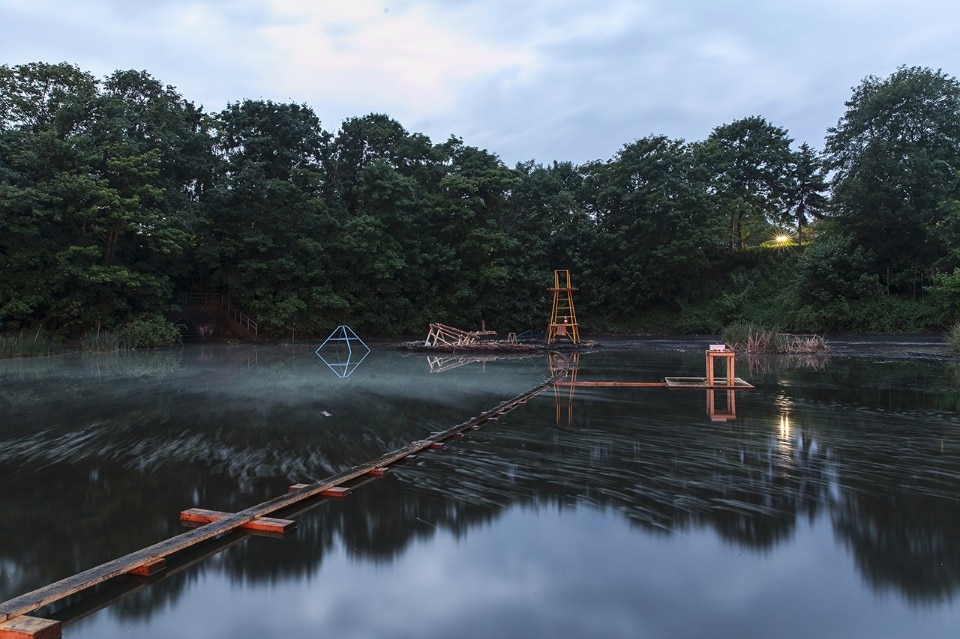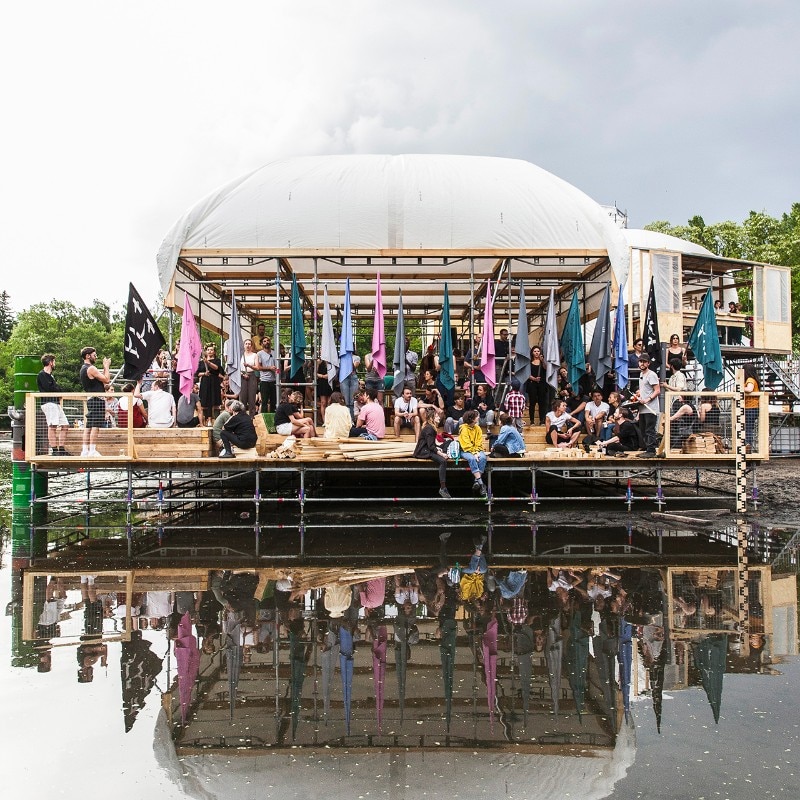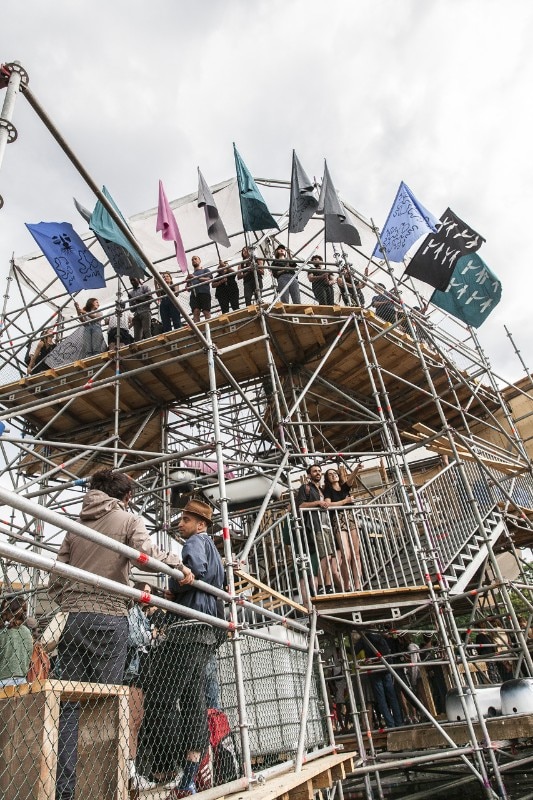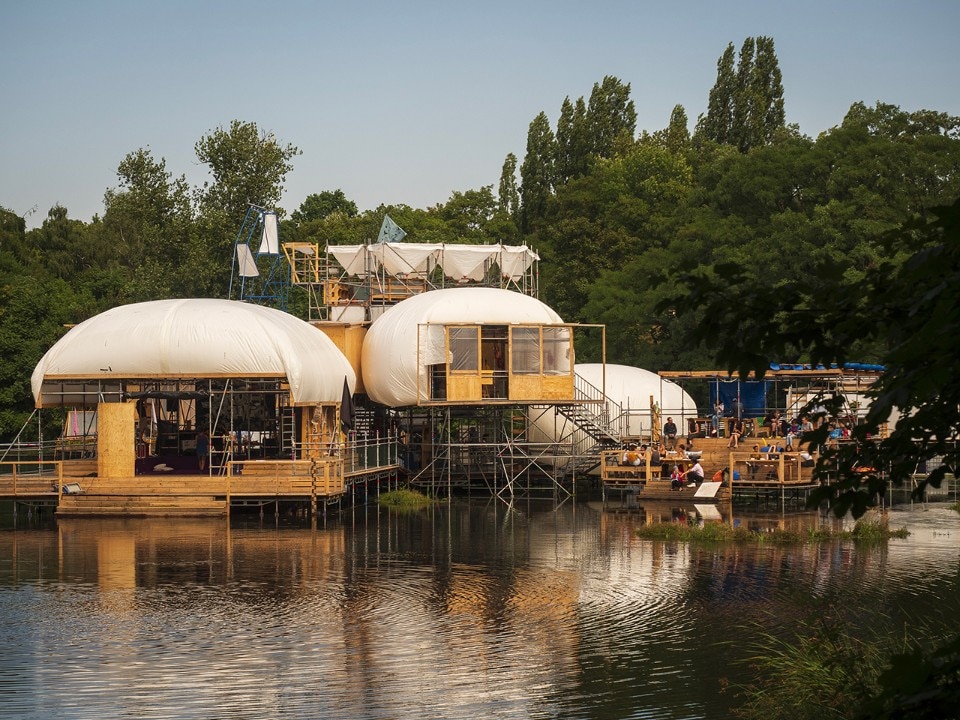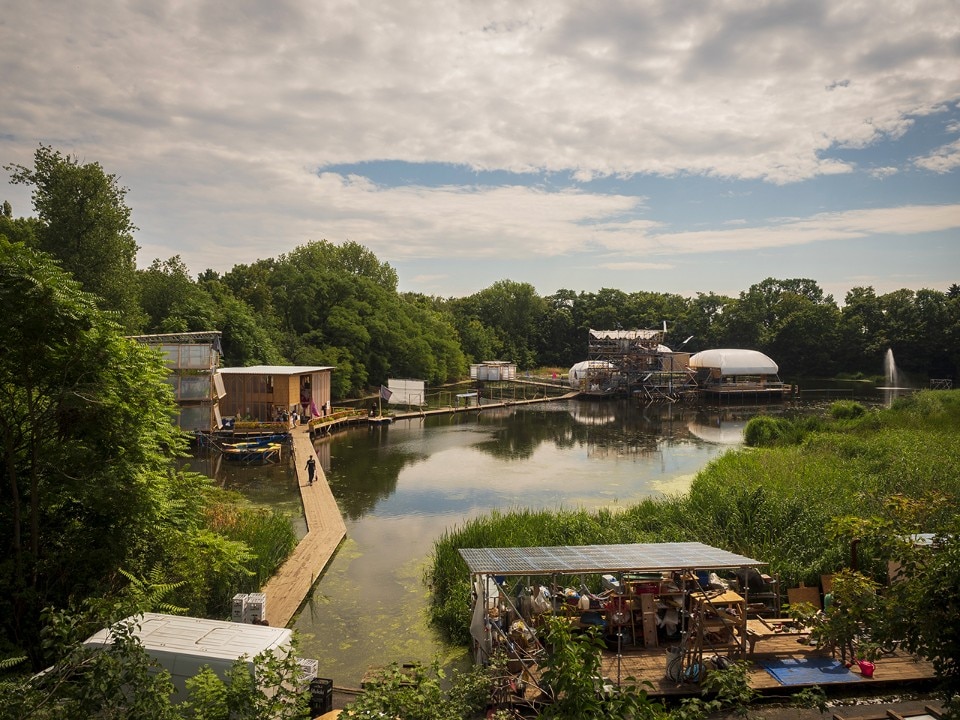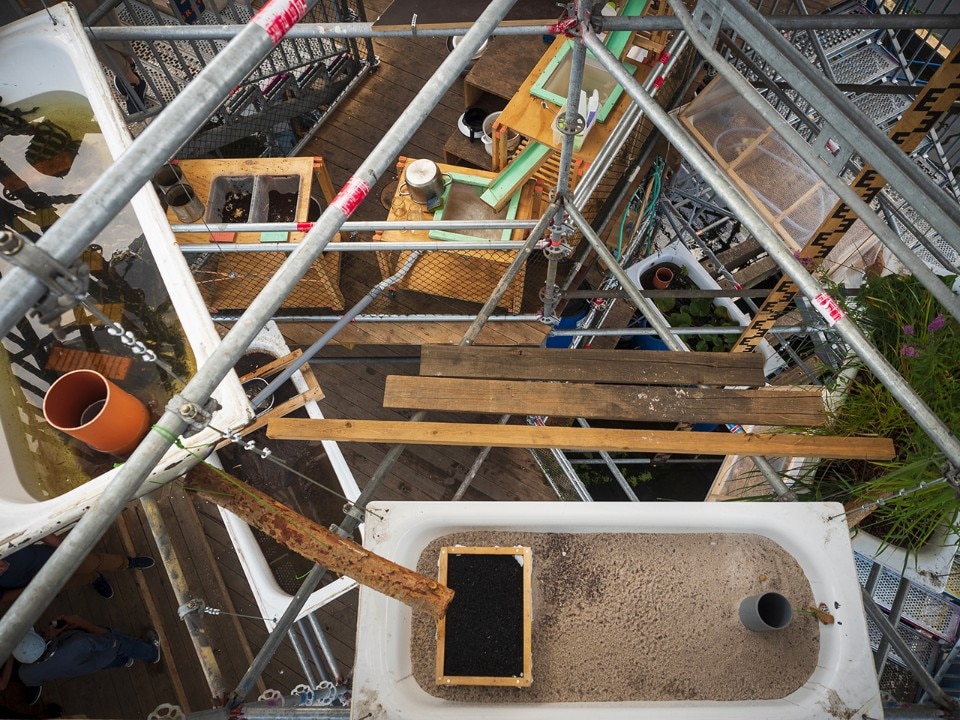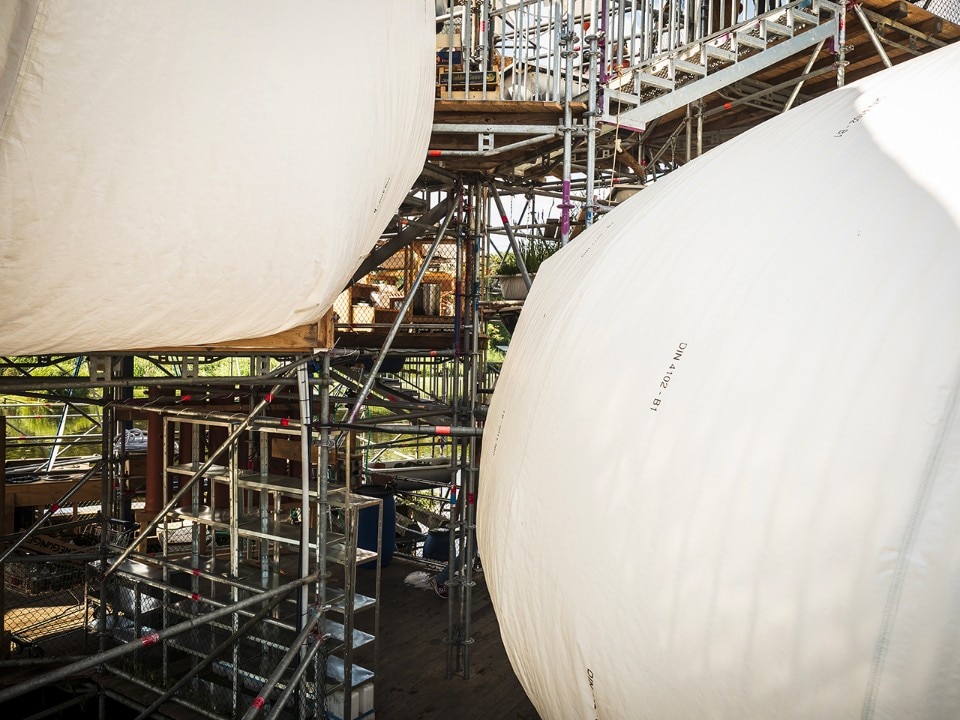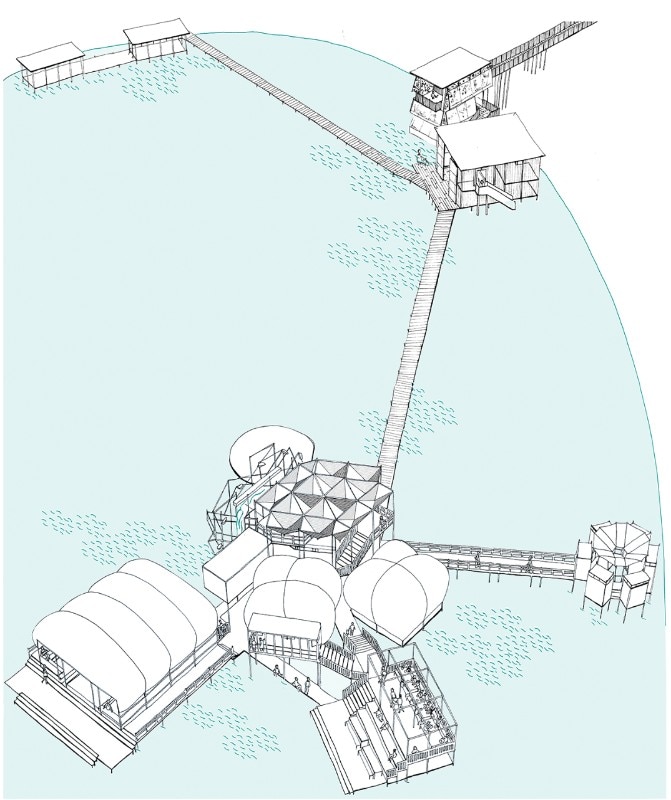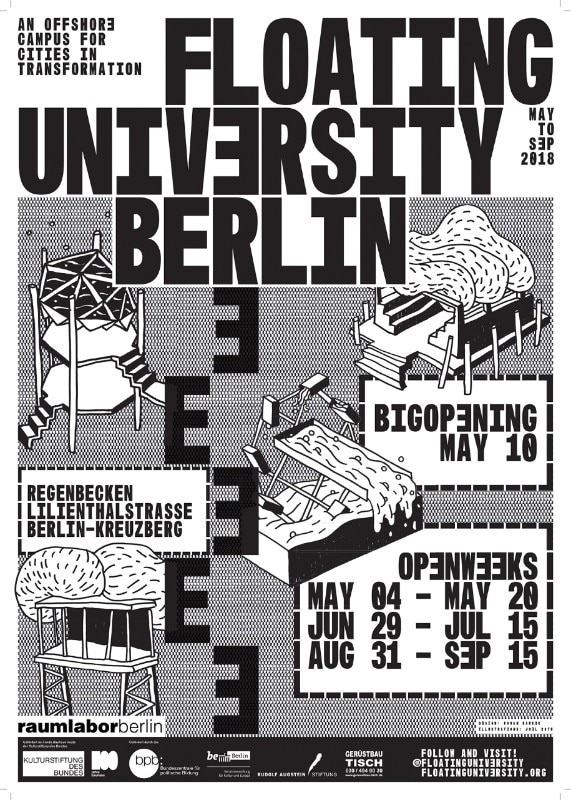Benjamin Foerster-Baldenius and Markus Bader are two of the minds behind Raumlabor (German for “spatial laboratory”), an architectural office specialising in anti-utopian projects that are small scale and deeply rooted in the local condition. Their way has always been to embrace a more cultural position for architecture in an attempt to give their research and manifestations both more longevity and relevance to the local surroundings. Their latest initiative, Floating University, will run between May and September 2018 in a rainwater basin next to the former Tempelhof airfield in Berlin.

 View gallery
View gallery
The existing and new structures will be used as a gathering place for visiting students and scientists from more than twenty international universities as well as artists, architects, musicians and dancers from around world. On the campus participants will be exposed to experimental learning, knowledge transfer and transdisciplinary workshops where they will research and investigate urban living with a view to formulating visions and ideas for the future. How can cities cope with risks? What are the strains and chances of global warming? How do we survive a shortage of resources? What will be the impact of super-diversity and hyper-accelerated development? Which tools do we need to live and work in a resource-efficient manner in the future?
How do we survive a shortage of resources? What will be the impact of super-diversity and hyper-accelerated development? Which tools do we need to live and work in a resource-efficient manner in the future?
“In a certain way we do see ourselves more as a university than an architectural office,” says Markus Bader. “We do a lot of questioning, challenging, testing and experimenting. In traditional terms maybe you would call us a research department within a university.” The whole Raumlabor team teaches, and there has always been the ambition to make education a more integrated and relevant aspect of their office. “Setting up the Floating University is a learning moment,” says Bader. “Normally the architect retreats after the structure is completed, but we like to stay on and consider our next contribution.”
So rather than isolate education from reality, discipline from discipline, or creatives from government, Raumlabor wants to remove boarders and thus limitations. So many more possibilities result from a cooperation between urbanism, anthropology, and city planning. “We have discovered that local experts, the people who know the city, who know a particular environment, are quite important for our work… especially if we want to be really serious,” says Benjamin Foerster-Baldenius. “And if we want any of our temporary installations and performances to be longer lasting in the heads and imaginations of people, this sort of cooperation is necessary.”
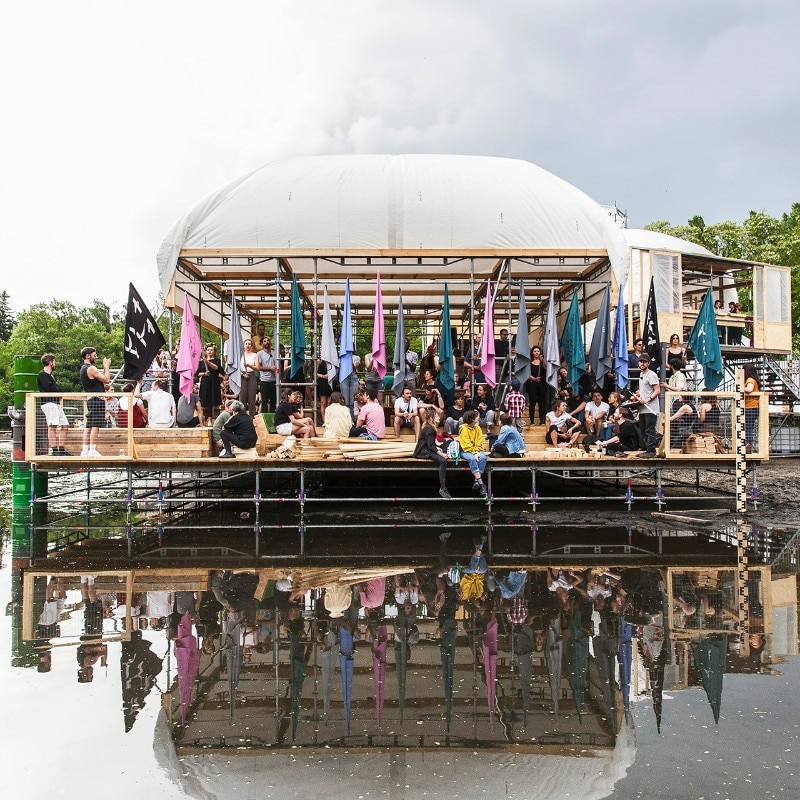
Not that education is ever going to solve all urban problems. “It is not a university’s job to find solutions,” says Foerster-Baldenius. “It's their job to find ways to bring future decision makers together, to put them in contact with these problems and to then try things, or at least develop an imagination about how to address things.” Which is exactly what many of the projects Raumlabor has been working on from festivals to fact-finding missions, public installations, exhibitions and publishing do. All their projects investigate topics as an addition to traditional teaching mechanisms. “We do things in a way that neither a traditional company nor an accredited school could do”, says Foerster-Baldenius. “It also works as an exchange between teachers because so many of us have not learned to teach. We are all sort of improvising out there”. And they have been doing this for almost two decades.
It is not a university’s job to find solutions. It's their job to find ways to bring future decision makers together, to put them in contact with these problems and to then try things, or at least develop an imagination about how to address things.
“I guess this approach started back in 2000 when we won a competition to work on an urban transformation plan for Halle-Neudstadt,” says Bader. “From that we were able to launch Hotel Neudstadt as a big cultural theater festival in an empty high-rise building. It was during that time that we discovered how fantastic it can be to have a sort of temporary moment where you can mobilize a lot of energy to find the cultural and social potential of a place, and then to discuss it not through planning, but through activities.”
This broader and more flexible embrace of education results in it becoming a tool for change. Every dweller, and every activity they engage in makes up a city. Protocols are established by users, but if this dynamic can be harnessed and turned into a narrative, people become motivated. But these narratives need to be about real people who want to be able to relate and react to urban issues in a more immediate way. By adding an educational arm to urban projects, ideas become more embedded in community, meaning more people can participate in the process of change. “Personally, I'm fascinated by the power of conversations,” concludes Bader.


